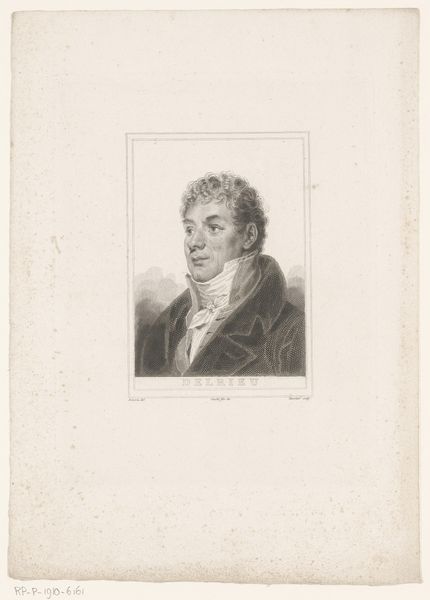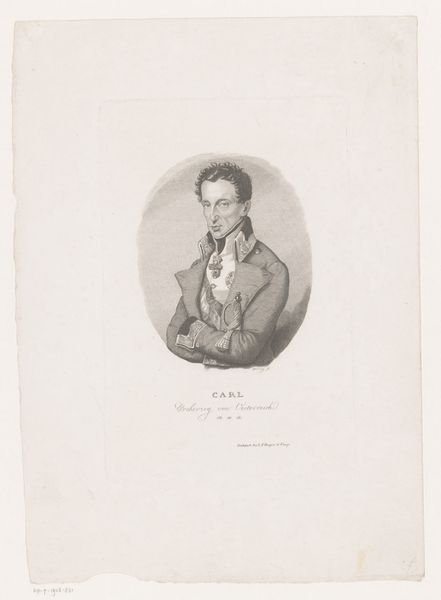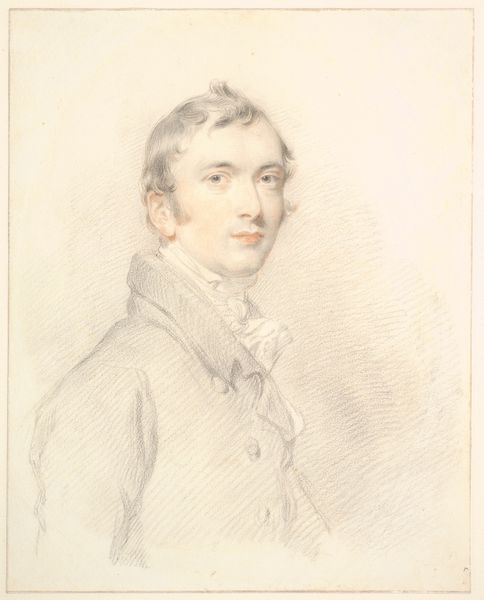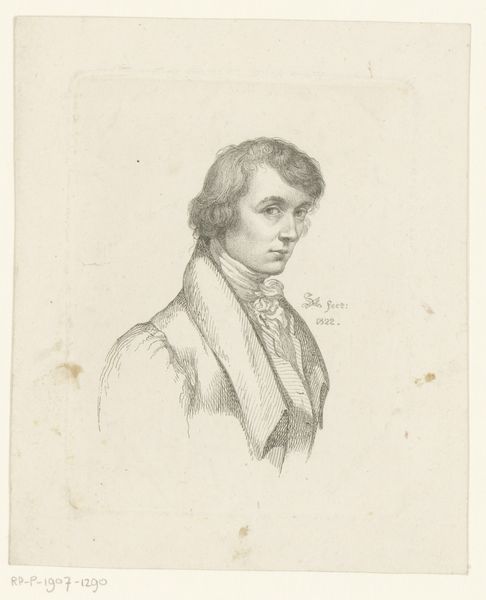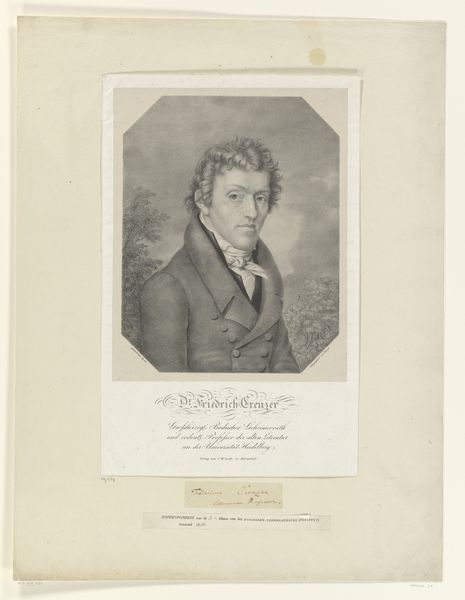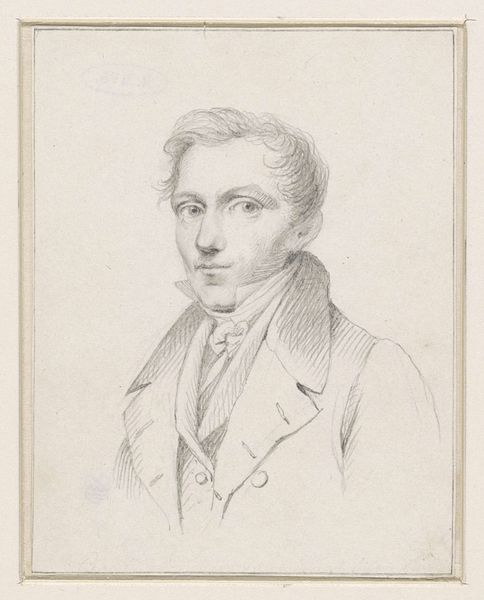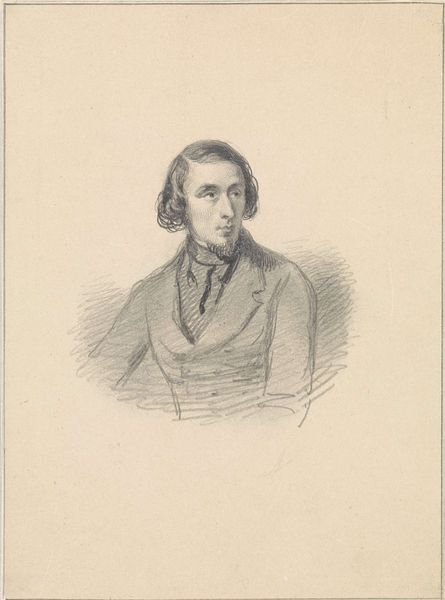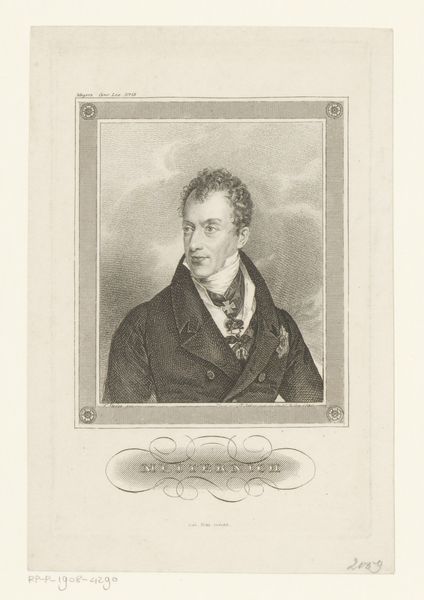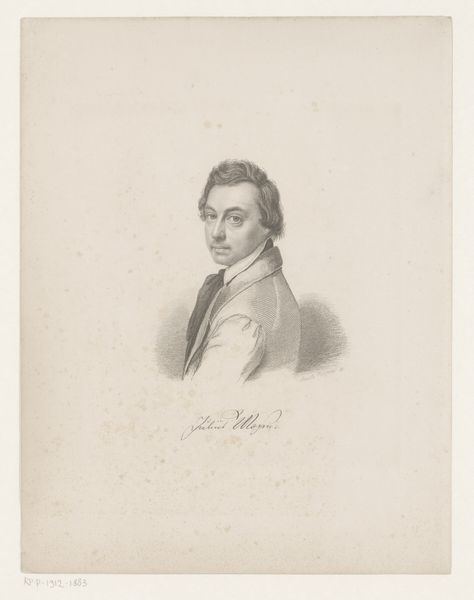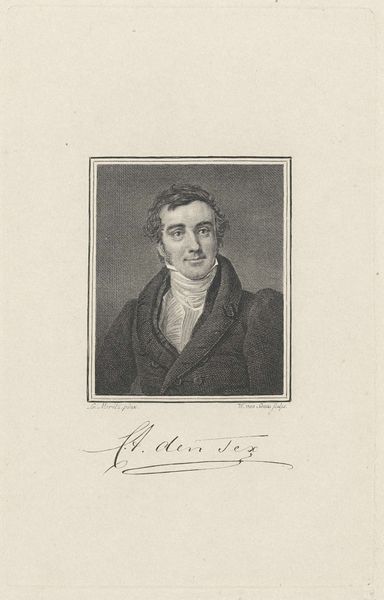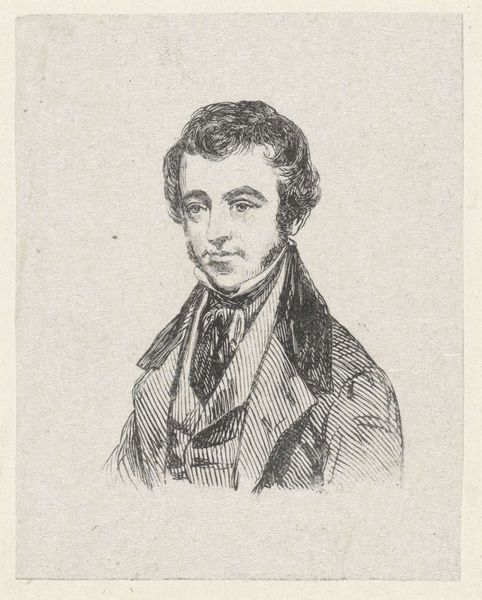
engraving
#
portrait
#
neoclacissism
#
history-painting
#
engraving
Dimensions: height 189 mm, width 141 mm
Copyright: Rijks Museum: Open Domain
Editor: This is Franz Christian Waldherr’s "Portret van Joseph Bergler II," created in 1813 using engraving. It’s such a direct and simple image. I wonder, what layers might we be missing just from looking at it? What stands out to you? Curator: The cap on Bergler's head. It appears so casual, yet in portraiture, clothing is rarely arbitrary. In this period, the "sleeping cap," as it was called, could signify intellectual pursuits or even republican sympathies. We have a man of thought here, portrayed in a style echoing classical simplicity – that Neoclassical influence. Consider how these symbols build a portrait, a story even, about identity. Editor: A sleeping cap suggesting intellect? I hadn’t considered that at all. I just saw it as ordinary. Does the landscape behind him add to that story? Curator: Absolutely. It’s not just decoration. The barely suggested, almost hazy landscape acts as a stage. Bergler is presented *in* relation to the world around him, not isolated from it. It gives him context, almost like situating a character within a larger historical narrative. Editor: So, every element is deliberate. Does knowing Bergler was a history painter himself change anything? Curator: Intriguing, isn’t it? Waldherr, the artist, engraves Bergler, the history painter. Consider how this portrait becomes a record *of* artistic legacy *by* artistic legacy. The image, therefore, reflects a certain self-awareness about the power of representation and the role of artists within society. Editor: That's fascinating. So much more than just a face. It really highlights how portraits function as historical documents using symbols and references. Curator: Exactly. They invite us to decipher visual clues and understand how identities were crafted and conveyed in different eras. A cultural memory, inscribed into an image.
Comments
No comments
Be the first to comment and join the conversation on the ultimate creative platform.
